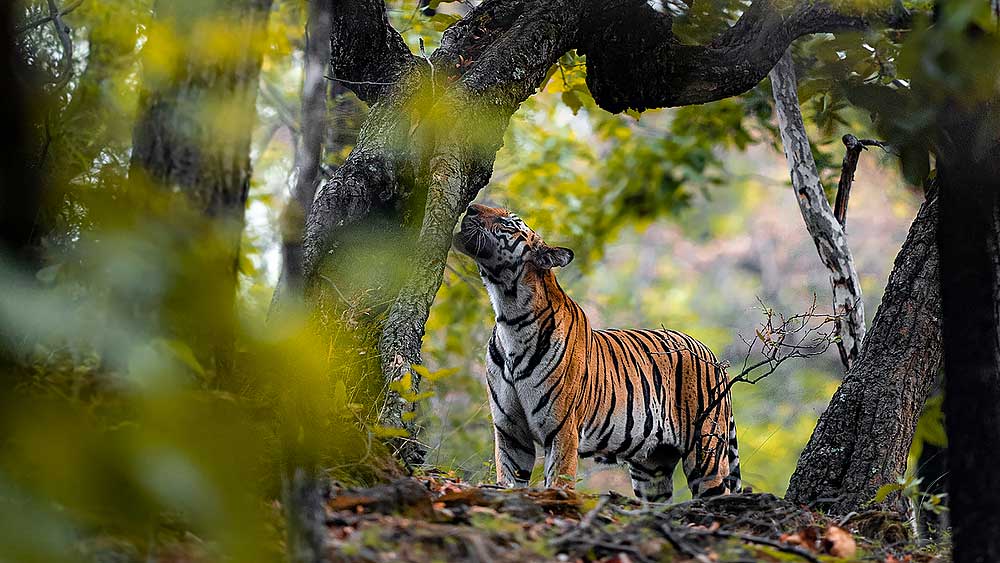Forests and tigers are inextricably linked. Because they are apex predators and live, breed, and hunt in forests, tigers are an indicator of a more robust environment. Preserving tigers therefore entails protecting vital habitats. The WWF identified 14 critical tiger landscapes that overlap with montane, tropical, evergreen, boreal, and thorny scrub forests. Governments are further motivated to stop unlawful deforestation in these woods when tigers are present. Forest landscapes are also intact because of the protection that tigers offer, storing carbon and reducing the effects of climate change while preserving biodiversity.
On the occasion of International Tiger Day, let us delve into the world of these magnificent animals and discover how they enable conservation at both micro and macro levels..

Safeguards Habitat
Tiger protection contributes to the preservation of several other extremely significant ecosystems and habitats. Similarly, there are numerous economic advantages (such as carbon emissions) to every hectare that is preserved as a tiger habitat.
Secures The Future Of Wildlife
A top predator, the tiger is the largest cat on the planet. It safeguards the health of the forest or grassland that serves as a habitat to herbivores by regulating their numbers. When we preserve tiger kingdoms, we also ensure the survival of other creatures!

A Cultural Icon
Tigers have been symbolic in Indian culture for millennia. From old folklore and children’s literature to ancient scriptures, this feline has been prominently featured in our society since time immemorial.

Climate Change
Tigers play an important role in mitigating climate change. Tiger landscapes store more carbon than any other type of forest in any region. The world’s most efficient carbon reserves are found in the protected forests of Asia’s tiger reserves.
Economic Advantages To Communities
There are several financial advantages to protecting these magnificent beasts. Tiger reserves provide pure drinking water and irrigation water, safeguard agricultural fields and fish nurseries, and enhance human lives. The economic benefits to the communities of these environments are immense!
Having started with just nine tiger reserves in 1973, India currently has 54 such areas under protection. Together, they cover an area of more than 75,000 square kilometres, almost 2 per cent of the country. According to new research published in the journal Nature Ecology and Evolution, a link has been identified between the preservation of tigers and the fight against climate change. Due to their high degree of adaptability, tigers such as the Bengal tiger subspecies can be found across India in mangroves, jungles, and so-called ‘dry forests.’ Despite their apparent differences, these environments are all linked by an abundance of trees.

The stringent protection offered by India’s network of tiger reserves has prevented massive quantities of deforestation. Additionally, it’s possible that between 2007 and 2020, tiger preservation prevented over a million tonnes of carbon emissions by saving forests that would have otherwise been cleared for development.
Even though a million tonnes of carbon may seem like a lot, it won’t have a significant impact on climate change. India alone produces roughly 2.7 billion tonnes annually, albeit at a very low rate per capita.
Some critics see India’s tiger reserve expansion as an economic luxury that would force tigers to coexist with humans and criminalise the local communities—some of whom have already been forced out of the reserves—for continuing to live their traditional lives. But in a world of pricing and commodities in the neoliberal era, endangered wildlife’s existence often rests on its capacity to defend itself. Furthermore, if carbon storage can be included in the arguments in favour of preserving tiger habitats, this might give conservationists newfound momentum.
Image source: Tiger safari, GetBengal, AWS assets